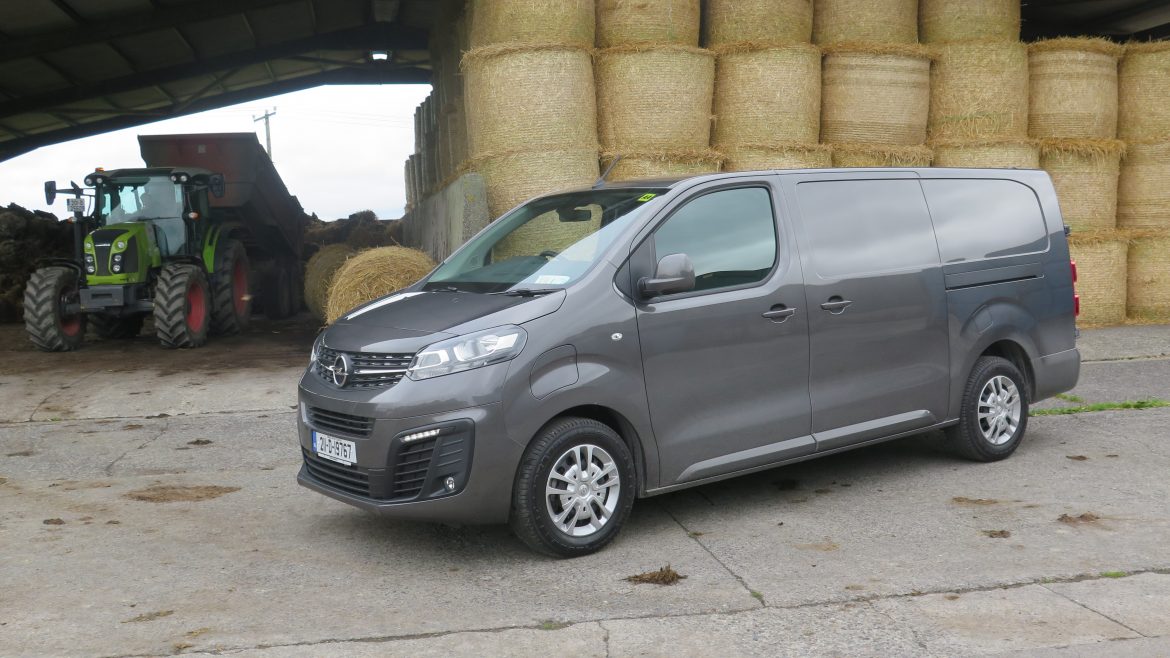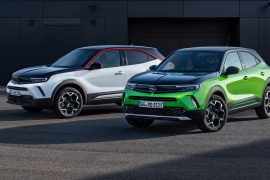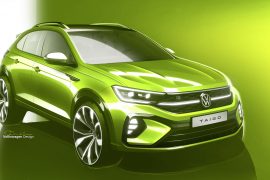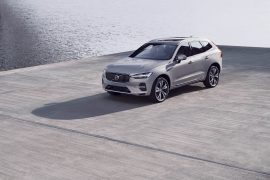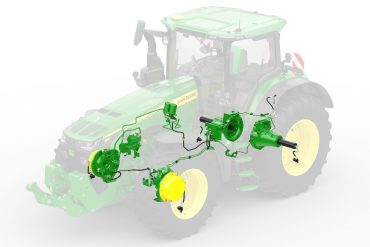Diesel prices are forcing us all to re-think motoring costs and the decisions around making the move to electric power in vans seem now more convincing. The issues of range are not as real as before and for many it is possible to live with electric power for smaller and lighter vans. You just need to prepare your head, your business and your pocket when planning for the option to change.
I’ve driven some electric vans in recent weeks, and they are just getting more impressive with each model that I drive. The range levels have improved and now they are beginning to offer decent load and towing capacities, the only significant gap in the decision for many to go electric, now remains the price.
You just know that van makers have made progress when the only difference is what’s under the bonnet or in the case of electric vans, what’s under the floor rather than in the fuel tank. So, whether it’s the new Opel e-Vivaro or Mercedes Benz Vito or Sprinter or it’s any of the other brands now offering electric van power, the fact that electric powered vans look the same as their internal combustion engine (ICE) counterparts is helping to make them acceptable, even if they are not fully there yet.
The new generation Opel Vivaro-e is the first all-electric light commercial vehicle (LCV) from Opel. It is the first electric van on the market to win the coveted 2021 International Van of the Year award. There are two battery options, the 50kWh battery and the 75kW battery with more range.
This is the van that I’ve on the road in the recent weeks and I amazed myself how comfortable I was to have it as my test drive. This is not a van that I had to learn a whole lot about, simply get in and drive. That meant driving in a more conscious way, planning the longer journeys and managing my expectations.
As time went on I easily learnt to live with it range restrictions, some of which were perceived restrictions rather than real ones. For me and many others it would be rare to cover more than 250km in a day’s van driving and the e-Vivaro can almost get there, even with a modest load on board.
An overnight charge brought my range to 220km at a cost of about 30 units of day rate electricity, which was less than the rated figure of 330km range. That’s a charging cost of about €6 per day running cost, which I hope to sharpen now that I got a Smart Meter from ESB where I can more easily manage the use levels. Maybe it’s time to upgrade my charger unit but there is no quibble with the running costs.
Driving the van in ECO mode gives the best range performance; I found it gave at least a 20% bonus. This may have compromised acceleration performance which is not an issue for short runs. For electric vans, I think that the ECO mode should be the default setting, because it’s the more practical option and one that the driver shouldn’t have to even consider. Power and acceleration are now things that are optional in a world where ECO is standard in all vocabularies.
And there are significant e-van benefits in terms of the driving ease and comfort. This Opel e-Vivaro was a very pleasant drive, smooth and powerful in terms of acceleration, plus the benefit of tyre-only noise which allowed me to run the radio at a more modest decibel level than I have experienced in traditional ICE vans.
This is just a normal van with all the features that a day-long van driver would expect in terms of safety and convenience. There’s Bluetooth included and the van’s safety record is intact irrespective of the power source.
The convenience features include wide opening rear doors and the test van had twin sliding side doors. There is no loss in terms of van load capacity, but the towing power is lower. The seat comfort is a match for any van and the visibility and easy of driving will mean an effortless change for drivers in terms of the functionality.
There are two trim levels. The entry Edition trim offers a 6-way adjustable driver seat with armrest, passenger bench seat with storage, laminated windscreen, bulkhead, 2 side sliding doors, ESP, hill assist, Bluetooth, USB connectivity, 180° opening solid rear doors, cruise control and speed limiter, a spare wheel, daytime running lamps and DAB radio. The Sportive edition adds more including a larger screen, Apple CarPlay and Android Auto and rear parking sensors.
What an e-Vivaro does demand is a bigger purchasing budget and a change of driver mindset. This is not a van for cross-country courier drivers, just yet. Its benefits shine through for those on short runs with multiple delivery drops.
The entry price for the Opel e-Vivaro starts at €40,395 (about €32,800 plus VAT). There is scope for an SEAI grant of up to €3,800 for businesses making the shift to electric power. There is also the benefit of up to €1,000 in toll refunds using electric vans to entice more companies to use them.
The first hurdle is the deal with the price difference between this e-van from Opel and its ICE counterparts. That’s a massive €13,000 (or €10,000 approx.) cost difference that you need to see a financial return on.
Servicing costs will be less, which may not be significant as many van deals now include a service package. Its down to running costs and convenience. With short run deliveries an electricity running cost of less than €10 per day should be possible. That converts to €0.04 per km in electric charging costs compared with €0.11 per km based on a 650km range for a diesel Vivaro.
The numbers are still tight but heading in the way of electric power. A van like the e-Vivaro can now deliver running cost savings, and allow you to do your thing for the environment, especially if you keep things local.
| Opel e-Vivara Van L1H1 100kW – specifications | |
| Engine | Electric |
| Engine power | 100kW |
| Engine Torque | 260Nm |
| 0 – 100km/hr | NA |
| Economy (WLTP) | NA |
| Range (Theoretical) | 330km |
| CO2 emissions | 0g/km |
| Road Tax Band | Commercial €333 |
| Main Service | 20,000km/12 months |
| Towing rating | 1000kg |
| Payload Capacity & Length | 1226kg/3.7 cubic metres & 3.1 m |
| Warranty | 8 years/160,000km |
| Entry Price | €40,395 incl VAT (€32,800 plus VAT) |

